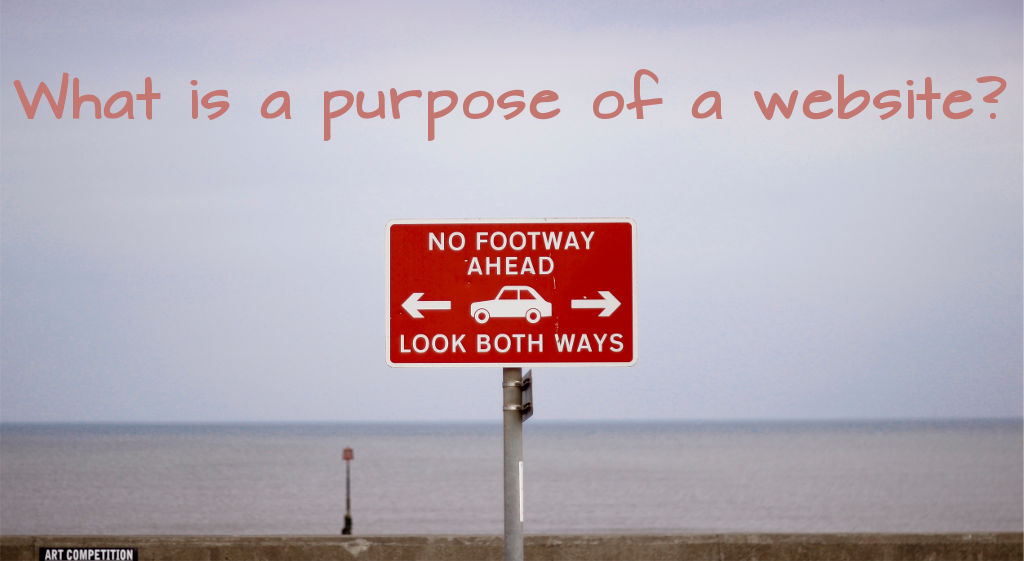
What is a webpage for? (What’s the goal of having a webpage?)
With this article, I would like to start a cycle called Back to Basics. Its purpose it to make us think about things we take for granted in web design for business, but that sometimes are just plain myths, and in other cases those things are not so obvious as we might think.
In this cycle we will basically cover the following topic: what makes a website a successful website. What are the ingredients needed for a good website?
So what is a webpage for? Does it need to have any purpose?
YES, it does. That is a necessary element of every successful web page. It needs to have a purpose. Many webpages fail because its purposes haven’t been reflected upon during the design stage nor anybody thought about them afterwards.
What’s more, answering this question is really answering another one: Do I really need a website?!
I hear you screaming, “we live in XXI century!. Everybody needs a web site. I need a website because my competition has one.” Well, that’s not true. Even the statement that everybody needs a web presence is not true! Those are myths. There are businesses or targets that do not require a website. Sometimes just being listed in Yellow Pages does the job better than any webpage. But you won’t hear it from most of web designers out there :) If you are unable to maintain the web page actively or develop it constantly, there is no meaning in having a web page. Because it will not fulfill any of the aimed goals.
Getting back to the main question: most of the answers you will give to the question about the purpose of your site can be closed in one sentence.A sucessful website needs to add some value to your business and it can achieve it in 6 main ways which can overlap with each other.
-
Building Brand Awareness – to promote your brand and make it recognizable
-
Building a community of potential clients around your page to attract potential customers
-
Being a communication channel for promotions, activities, events
-
Selling your product / service directly – another sale channel for your business
-
New business contacts – getting in contact with providers and other businesses that are not your clients or hiring new staff
-
Making your internal processes easier – internal portal to work with employees in different locations, coordinate different branches, having online CRM system or even customer service website.

I would like to explain the 2 last points in the second part of Back to basics series as those goals are almost forgotten and often overlooked. Please stay tuned, part 2 coming soon!
Having nailed those 6 main ways to add value to your business by having a website brings us down to one thing. It is all (perhaps except for the 2 last ) about direct relation with customers and potential customers. A website is a kind of a middle man between a company and people interested in their services / product.
In other words, a website is a gateway for your company to direct interaction with potential clients.
So the common sense will tell us that the whole process of designing and having a web page should be client-centric. Yet sadly in many cases it is totally the opposite.
It is often company-centric. We want to promote our company’s image by using techniques we (as business owners) like and are used to. On the other hand, web pages are seldom agency / designer-centric. The designer wants to show off his style and knowledge. The most beautiful colours get combined with astonishing web interface and many photos, etc.
Amidst all this, the main hero of any web page – the VISITOR – gets forgotten. The most important thing of a web site is USER FRIENDLINESS. To let the user make things the way they like, and not to hide important (to the client, not to the company) information behind many subpages and clicks. Clean and intuitive design is key here, as well as well programmed and planned base for the engine serving the web site. It needs to be functional and practical.
So you could ask, how should I know what the client wants, how he moves around the web page, what is a hindrance for him. Well, there is a really easy answer to this question.
Ask them! Modern technology gives us multiple and effective ways to communicate and interact with web visitors. I would like to cover them in detail in the next part of the series of getting to the basics, but I will just name them here:
direct website survey, ask your followers on social networks, analyze your site visit statistics, analyze your site keywords, analyze what visitors are doing on the page, etc.
To sum up
The first ingredient needed for a good website is to have a goal. A website needs to have a clear goal. What’s more, it needs to be designed and maintained according to this goal. And last but not least, it needs to be client-centric.
